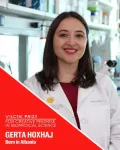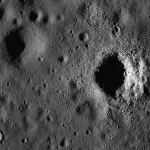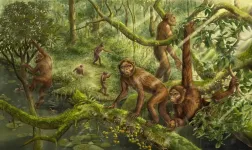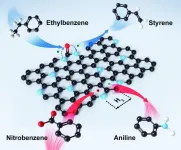(Press-News.org) The Vilcek Foundation announces the recipients of the 2024 Vilcek Foundation Prizes in Biomedical Science. Awarded annually since 2006, the prizes recognize outstanding immigrant scientists at the forefront of their fields, and celebrate the importance of immigrant contributions to scientific research and discovery in the United States. In 2024, the foundation awards $250,000 in prizes to Luciano Marraffini (b. Argentina), Gerta Hoxhaj (b. Albania), Tomasz Nowakowski (b. Poland) and Takanori Takebe (b. Japan).
“With the 2024 Vilcek Foundation Prizes in Biomedical Science, we honor scientists who have made the bold decision to immigrate to the United States—and who, through their personal and professional journeys, have made important discoveries that benefit science, medicine and society,” says Vilcek Foundation President Rick Kinsel. “Since 2006, the Vilcek Foundation Prizes in Biomedical Science have been a way for the foundation to honor Jan Vilcek’s scientific leadership and legacy, and to build awareness of the importance of immigration for scientific research and discovery.”
“The United States’ leadership in biomedical science and research is in no small part due to the contributions of immigrant scientists,” says Jan Vilcek, Cofounder, Chairman and CEO of the Vilcek Foundation. “The 2024 Vilcek Foundation Prizewinners exemplify the profound diversity of thought and innovation of immigrant scientists: From pioneering studies in cancer metabolism, to using pluripotent stem cells to grow transplantable organoids to treat chronic liver disease, to decoding the nature of CRISPR-Cas systems, their work has formidably advanced science and medicine and is reshaping how scientists and clinicians understand and treat disease.”
Vilcek Prize in Biomedical Science: Luciano Marraffini
The Vilcek Prize in Biomedical Science is a $100,000 award bestowed on an immigrant scientist whose career achievements demonstrate a legacy of major accomplishment in their area of study. The 2024 Prize is awarded to Luciano Marraffini.
Marraffini receives the Vilcek Prize in Biomedical Science for his pioneering research on the study of CRISPR-Cas systems in bacteria, and on the potential applications for CRISPR-Cas including genome editing. Born in Argentina, Marraffini is the Kayden Family professor at Rockefeller University and a Howard Hughes Medical Institute Investigator. He is a member of the National Academy of Sciences, the American Academy of Microbiology and the American Academy of Arts and Sciences.
The 2024 Vilcek Prizes for Creative Promise
The Vilcek Prizes for Creative Promise in Biomedical Science are $50,000 prizes given to immigrant scientists and researchers under the age of 40 whose work represents a significant contribution to their field and opens new avenues for further research and discovery.
Gerta Hoxhaj receives the Vilcek Prize for Creative Promise in Biomedical Science for her work on mapping the molecular links between signaling pathways and metabolic networks of cancer cells with a focus on identifying vulnerabilities that could be used to develop cancer targeted therapies. Born in Albania, Hoxhaj is an assistant professor with the Children’s Research Institute and the Department of Biochemistry at the University of Texas Southwestern Medical Center.
Tomasz Nowakowski receives the Vilcek Prize for Creative Promise in Biomedical Science for the development of technologies to identify and track the regenerative capacity of neural stem cells and neural progenitor cells in the human brain. Born in Poland, Nowakowski earned his PhD in Biomedical Sciences at the University of Edinburgh and completed postdoctoral research at the University of California, San Francisco, where he is now an associate professor of neurological surgery and anatomy.
Takanori Takebe receives the Vilcek Prize for Creative Promise in Biomedical Science for developing vascularized three-dimensional human organoid tissue from pluripotent stem cells that can be transplanted in humans, paving the way for targeted approaches to intractable liver diseases. Born in Japan, Takebe earned his MD and PhD at Yokohama City University School of Medicine. He is an associate professor with the Cincinnati Children’s Hospital Medical Center.
The 2024 Vilcek Foundation Prizes
In addition to the Vilcek Foundation Prizes in Biomedical Science, in 2024 the foundation is awarding $250,000 in prizes to immigrant design professionals with the Vilcek Foundation Prizes in Design. The recipients of the Vilcek Foundation Prizes in Design are Ramon Tejada (b. Dominican Republic), Wael Morcos (b. Lebanon), Juan Carlos Noguera (b. Guatemala) and Maryam Turkey (b. Iraq).
The Vilcek Foundation
The Vilcek Foundation raises awareness of immigrant contributions in the United States and fosters appreciation for the arts and sciences. The foundation was established in 2000 by Jan and Marica Vilcek, immigrants from the former Czechoslovakia. The mission of the foundation was inspired by the couple’s respective careers in biomedical science and art history. Since 2000, the foundation has awarded over $7 million in prizes to foreign-born individuals and has supported organizations with over $6 million in grants.
The Vilcek Foundation is a private operating foundation, a federally tax-exempt nonprofit organization under IRS Section 501(c)(3). To learn more, please visit vilcek.org.
END
Vilcek Foundation awards $250,000 to immigrant scientists
The Vilcek Foundation Prizes recognize and celebrate immigrant leaders in biomedical science and biotechnology in the United States
2024-02-06
ELSE PRESS RELEASES FROM THIS DATE:
Covid vaccine for pregnant women safe for newborn infants
2024-02-06
No increased risks for babies, and for some serious neonatal complications lower risks. This is the result of the largest study to date on the safety of newborn babies whose mothers were vaccinated against COVID-19 during pregnancy. The study is a collaboration between Swedish and Norwegian researchers and is published in the journal JAMA.
COVID-19 vaccination in pregnancy was not associated with any increased risks in newborn infants. On the contrary, the study of nearly 200,000 newborns in Sweden and Norway showed that babies born by women who chose to be vaccinated ...
Neonatal outcomes after COVID-19 vaccination in pregnancy
2024-02-06
About The Study: In this population-based study from Sweden and Norway that included 94,000 infants exposed to COVID-19 vaccination during pregnancy and 102,000 control infants born between June 2021 and January 2023, vaccination of pregnant individuals with mRNA COVID-19 vaccines was not associated with increased risks of neonatal adverse events in their infants.
Authors: Mikael Norman, M.D., Ph.D., of the Karolinska Institutet in Stockholm, is the corresponding author.
To access the embargoed study: Visit our For The Media website at this link https://media.jamanetwork.com/
(doi:10.1001/jama.2023.26945)
Editor’s Note: Please ...
Effectiveness of bivalent mRNA COVID-19 vaccines in preventing SARS-CoV-2 infection in children and adolescents ages 5 to 17
2024-02-06
About The Study: The bivalent COVID-19 vaccines protected children and adolescents against SARS-CoV-2 infection and symptomatic COVID-19 in this study including 2,959 participants ages 5 to 17 years. These data demonstrate the benefit of COVID-19 vaccine in children and adolescents. All eligible children and adolescents should remain up to date with recommended COVID-19 vaccinations.
Authors: Leora R. Feldstein, Ph.D., of the Centers for Disease Control and Prevention in Atlanta, is the corresponding author.
To access the embargoed study: Visit our For The Media website ...
Pancreatic Cancer: Italian scientists found out how the tumor escapes therapies
2024-02-06
Italian scientists from Università Cattolica at Rome discovered an important genetic mechanism that pancreatic cancer cells employ to evade therapies, paving the way to new drugs for a killer disease. The tumor evades treatments by implementing a 'favorable genetic reshuffling,' strategically playing its best cards to thwart cures. This finding is the result of a study published today in the journal Cell Reports Medicine, coordinated by Claudio Sette, Professor of Human Anatomy at the Catholic University, and Director of the "Organoids Facility" at the Policlinico Universitario A. Gemelli ...
Gun violence exposure and suicide among black adults
2024-02-06
About The Study: Gun violence exposure among Black adults in the U.S. was significantly associated with lifetime suicidal ideation and behavior in this study that included 3,015 Black adults. Public health efforts to substantially reduce interpersonal gun violence may yield additional benefits by decreasing suicide among Black individuals in the U.S.
Authors: Daniel C. Semenza, Ph.D., of Rutgers University in Camden, New Jersey, is the corresponding author.
To access the embargoed study: Visit our For The Media website at this link https://media.jamanetwork.com/
(doi:10.1001/jamanetworkopen.2023.54953)
Editor’s ...
Cancer risk following smoking cessation
2024-02-06
About The Study: Sustained smoking cessation was associated with a significantly reduced risk of cancer after 10 years since quitting in this study of 2.9 million Korean adults. Quitting at any age helped reduce the cancer risk, and especially for lung cancer, early cessation before middle age exhibited a substantial risk reduction.
Authors: Jin-Kyoung Oh, Ph.D., of the National Cancer Center Graduate School of Cancer Science and Policy in Goyang, Republic of Korea, is the corresponding author.
To access the embargoed study: Visit our For The Media website at ...
Understanding the moon’s history with Chang’e-5 sample
2024-02-06
WASHINGTON, Feb. 6, 2024 – Earth’s moon achieved its Swiss cheese appearance from celestial objects crashing into its surface, forming impact craters. But craters weren’t all that was left behind; the intense pressure and temperature of such a collision also impacts the rocks and dust covering the lunar surface, known as regolith, altering its mineral composition and structure. Analyzing the resulting minerals provides modern researchers clues to the moon’s past.
China’s Chang’e-5, the first lunar sample ...
Inner ear of miocene fossil ape gives clues to evolution of bipedalism
2024-02-06
A new study of a 7–8-million-year-old extinct fossil ape from China called Lufengpithecus offers new insights into the evolution of human bipedalism.
The study, published in The Innovation, was conducted by a team from the Institute of Vertebrate Paleontology and Paleoanthropology (IVPP) of the Chinese Academy of Sciences, the Yunnan Institute of Cultural Relics and Archaeology (YICRA), and New York University (NYU).
Humans and our closest relatives, the living apes, display a remarkable diversity of locomotor abilities, from walking upright on two legs to climbing and clambering in trees to walking using all four limbs. Scientists have long been fascinated ...
GPT-3 transforms chemical research
2024-02-06
Artificial intelligence is growing into a pivotal tool in chemical research, offering novel methods to tackle complex challenges that traditional approaches struggle with. One subtype of artificial intelligence that has seen increasing use in chemistry is machine learning, which uses algorithms and statistical models to make decisions based on data and perform tasks that it has not been explicitly programmed for.
However, to make reliable predictions, machine learning also demands large amounts of data, which isn’t always available in chemical research. Small chemical datasets simply do not provide enough information for these algorithms to train on, which limits their effectiveness.
In ...
Guanine synthesis yields new insights into nitrogen’s role in nanocarbon catalysis
2024-02-06
In recent years, carbon-based catalysts — especially nitrogen-doped nanocarbons — have emerged as sustainable, reliable alternatives to the metal catalysts that have traditionally been used to support chemical reactions. Researchers from the Key Laboratory of Advanced Carbon-Based Functional Materials (Fujian Province University) at Fuzhou University synthesized nanocarbons from guanine molecules to better understand the precise role nitrogen plays in the carbon-based materials and explore the reaction mechanisms of these catalytic systems.
In a recently published study, the research team clarified how different types of nitrogen can modulate oxidative dehydrogenation ...
LAST 30 PRESS RELEASES:
Short, light-intensity exercise boosts executive function and elevates mood in children
Jeonbuk National University researchers reveal new interface engineering strategy for efficient and stable back-contact solar cells
Tyrosinase drives hydroquinone-induced exogenous ochronosis: not HGD inhibition
UMass Amherst chemists develop unique tool for studying RNA
Disappointment alters brain chemistry and behavior
A built-in odometer: new study reveals how the brain measures distance
Stress-related brain signals drive risk of cardiovascular disease in people with depression and anxiety
New details on role of fat transport molecules in Alzheimer’s onset
Study illuminates how an antiviral defense mechanism may lead to Alzheimer’s disease
Spot the males: New gene-editing method could transform mosquito control
AI learns to build simple equations for complex systems
NAU team releases 13 years of detailed U.S. CO2 emissions data
Unveiling how sodium-ion batteries can charge faster than lithium-ion ones
How do childcare tax credits affect children’s long-term health?
Can an electronic nose detect indoor mold?
Do natural disasters have long-term impacts on mortality in older adults?
Modification improves sodium‐ion batteries as an alternative to lithium-ion batteries
Parasports provide a range of benefits for people with cerebral palsy
How does grandparental care affect children’s health?
Why are there so many Nordic mediators?
Young shark species more vulnerable to extinction
Mobile fetal heart monitoring linked to fewer newborn deaths in Tanzania
Bluey’s dad offered professorial chair in archaeology at Griffith University
Beyond small data limitations: Transfer learning-enabled framework for predicting mechanical properties of aluminum matrix composites
Unveiling non-thermal catalytic origin of direct current-promoted catalysis for energy-efficient transformation of greenhouse gases to valuable chemicals
Chronic breathlessness emerging as a hidden strain on hospitals
Paleontologists find first fossil bee nests made inside fossil bones
These fossils were the perfect home for ancient baby bees
Not everyone reads the room the same. A new study examines why.
New research identifies linked energy, immune and vascular changes in ME/CFS
[Press-News.org] Vilcek Foundation awards $250,000 to immigrant scientistsThe Vilcek Foundation Prizes recognize and celebrate immigrant leaders in biomedical science and biotechnology in the United States






